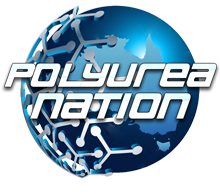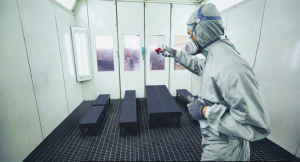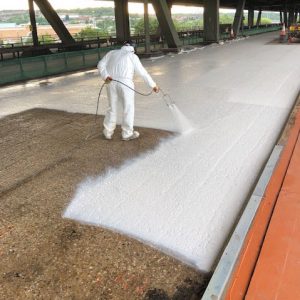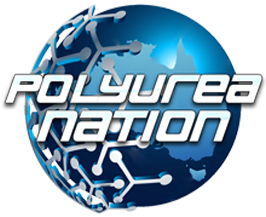The continued growth of the pipe coating industry requires and relies upon successfully bridging the current disconnect and working together to deliver quality applied coatings.
In the last twenty or thirty years, the oil and gas pipeline coatings industry has seen a lot of changes. From the days of coal tar coatings with relatively little oversight, the rapid growth of advanced coatings, specifically fusion-bond epoxy (FBE) with very specific application procedures, has led to highly detailed coating specifications covering every aspect of the process. For example, when I started in the late 1990s, coating specifications were maybe four or five pages. It is common to see specifications of 35 to even 75 pages, depending on the project and scope.
With recent increased state and federal regulations such as the Pipes Act of 2016 and the public’s increased awareness of pipelines as provided by the media, end-users, and engineers have been pressured to increase their knowledge and control of the pipe coating application. This has resulted in an ever-expanding level of specifications, standards, and detailed processes. The inspection level and the comprehension of coatings inspectors has also seen tremendous growth, with training programs such as those from NACE and SSPC (now unified as AMPP).
Unfortunately, the downside of this trend is that it has failed to reach the ground-level plant workers who are charged with surface preparation, applying the coatings, and final inspection, and those responsible for reading and interpreting these specifications from which work-floor instructions are developed. The beginnings of the disconnect between the segments were undeniable and mostly unavoidable.
A Historical Perspective of Pipeline Coatings
The pioneering days of applied coatings are long over. But even in the early stages of modern pipe coating, the average plant worker typically had a high school education and was not necessarily a graduate. Still, it was very rare that any had college experience at all. That included everyone from the ground up. Training programs at the time were nearly non-existent, and the majority of the training was on-the-job training using knowledge handed down through generations of coaters. But many of the [senior] coaters with the most experience were reluctant to share their knowledge. Basic job security concerns, while understandable, led to negative impacts on the growing coatings industry by creating unintentional classes of plant workers, and in some cases in supervisory and management levels as well.
The engineering teams focused on the operational aspects of pipelines for the end-users, leaving much of the coating controls up to the applicators and powder coating manufacturers. However, like in the plant settings, the engineering side’s gathering and transfer of knowledge were kept within a narrow group.
According to Mark Greenly, a resulting negative was “the growing gap between the two segments and the tension, if you will, between coaters and end-users,” now a General Manager for Womble Coating.
The beginnings of an internal disconnect within the industry were seemingly self-initiated. Coating operators were not communicating their practical concerns with the engineers, and the engineers were rarely experienced in the coating application at the plant level. The sides were operating completely separately yet trying to reach the same goal.
Pipeline Coatings in the Present Day
In the current industry setting, the disconnect between these two segments is still present for many of the same reasons but arises from different circumstances.
Increased governmental and environmental involvement in pipelines has forced end-users to expand their engineering departments to conform to the expanding regulations. The unavoidable result is high-level specifications, with high-level language intended to address these changes, but often with very little practical knowledge of the coating application plant operations. Unfortunately, there has been very little change in the workforce demographics on the plant side, which leaves them at a great disadvantage and primed for an even greater divide.
In fact, “it is common for plant personnel to hold resentment towards engineers for their lack of real-world application constraints and production practices,” said Garcia, and vice versa for engineers to be frustrated at the coaters’ lack of knowledge of regulatory requirements.
An obvious example of how far the two sides have further separated is the difference in average wage for coating engineers and plant workers. According to recent numbers, coatings engineers average $93,000 per year in the US, whereas ground-level labor earns $13.75 per hour in the US. However, a difference is warranted as engineering degrees can cost upwards of $50,000 per year. And that hourly estimate for plant labor may even be slightly elevated from today’s actual coating plant employees’ wages, considering staff turnover rates in coating plants, which results in a greater number of entry-level wages.
This also reduces the general and specific knowledge of plant workers, whereby employers are reluctant to invest in extensive training only to have the employees seek higher wages (a benefit of the provided training) elsewhere but then leaving the employers having to start over with the next batch of freshly-hired employees continually.
Lately, there has been a shift for coating applicators to hire supervisors and plant managers with higher education levels. But without hands-on coating experience and the ability to relate instructions directly with the work crews, this may contribute to the expanding disconnect between the plant workers, experienced coaters, and end-users.
However, even with well-qualified plant managers and supervisory staff, the growing requirement for third-party inspectors to be onsite and represent the end-user places a perhaps unintentional block on open communication between the end-user and the coating applicators. By and large, inspectors are not mediators on behalf of the end-user but rather witnesses and enforcers of the specification as it is written, often without regard to acceptable standardized practices. Unfortunately, inspectors, even those certified by recognized training programs such as NACE’s CIP program, can also lack practical working knowledge, further exacerbating the divide.
Bridging these gaps between the segments above – end-users and coating engineers, coating applicators, and third-party representation – is a widely sought goal throughout the industry, evidenced by the growing interest and membership in organizations such as AMPP. (Related reading: 9 Ways the Merger Between NACE and SSPC Will Impact Corrosion Pros.) But reaching any unified goal in a multi-entity industry requires the acknowledgment and effort of each to find a starting point addressing the problems.
Suggestions to Address the Industry Disconnect
Based on advice from Garcia and Greenly, my own experiences with each facet of the industry, and general scuttlebutt within various coating facilities, the following are some common suggestions to begin narrowing the divide:
-
- End users and engineers charged with writing specifications would benefit from spending time in an operational coating plant to gain experience in the application process and, more importantly, to understand the practical workings and functional and economic constraints that coating plant operators face. Experiencing the coater’s perspective first-hand may help understand a coater’s reluctance to continuously change plant parameters, especially those that have no impact on coating integrity, is primarily based on efficiency and reducing operating costs and not necessarily on an unwillingness to meet customer expectations. This is especially true with small quantities where multiple changes can cost thousands of dollars in downtime.
-
- For agencies that certify inspectors, a popular suggestion is to institute apprentice-level certifications that require a minimum number of hours with a certified inspector before advancing to full certification. Another possibility is to add specific industry endorsements that supplement general knowledge certifications to ensure practical experience as end-user representatives.
-
- Coating applicators should understand that regulations are increasing and intensifying, along with the pressure and enforcement action being directed at the end-users. Investing in the education and formal training of mid-to upper-level staff benefits the coating industry in general. It leads to more efficient operations by reducing turnover.
The continued growth of the pipe coating industry requires and relies upon successfully bridging the current disconnect and working together to deliver quality applied coatings, provide safe and efficient pipelines, and meet full regulatory compliance. It will require the cooperation and effort of all parties, but we will all be better for it.








